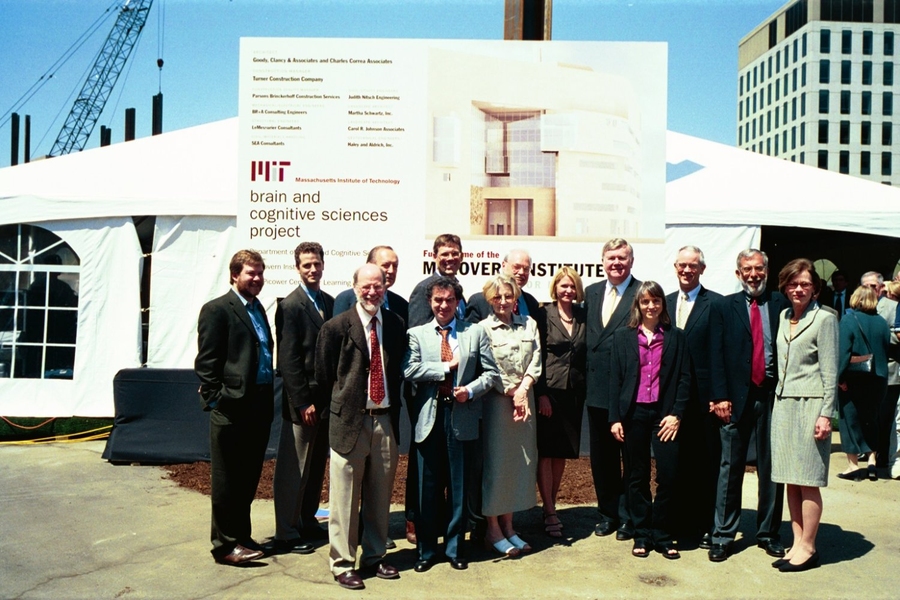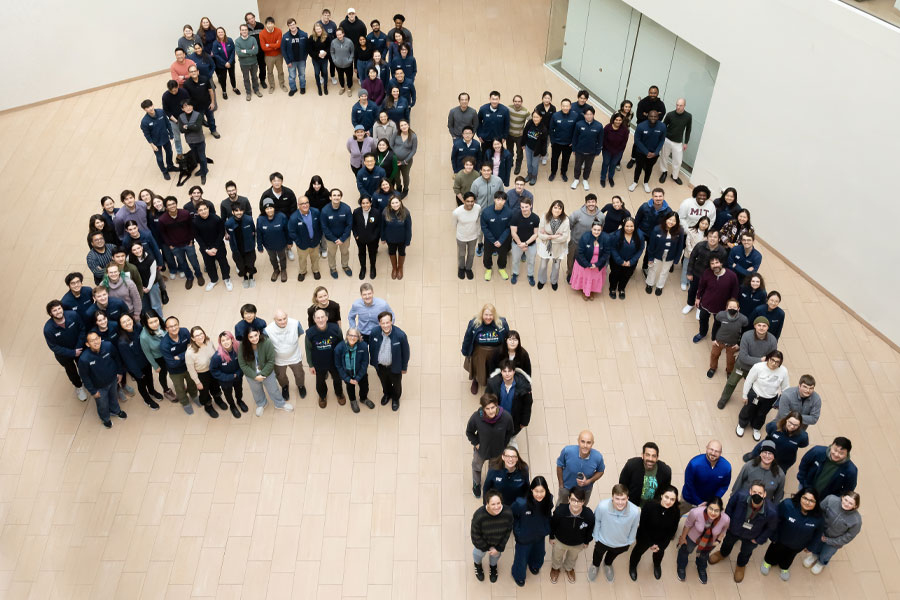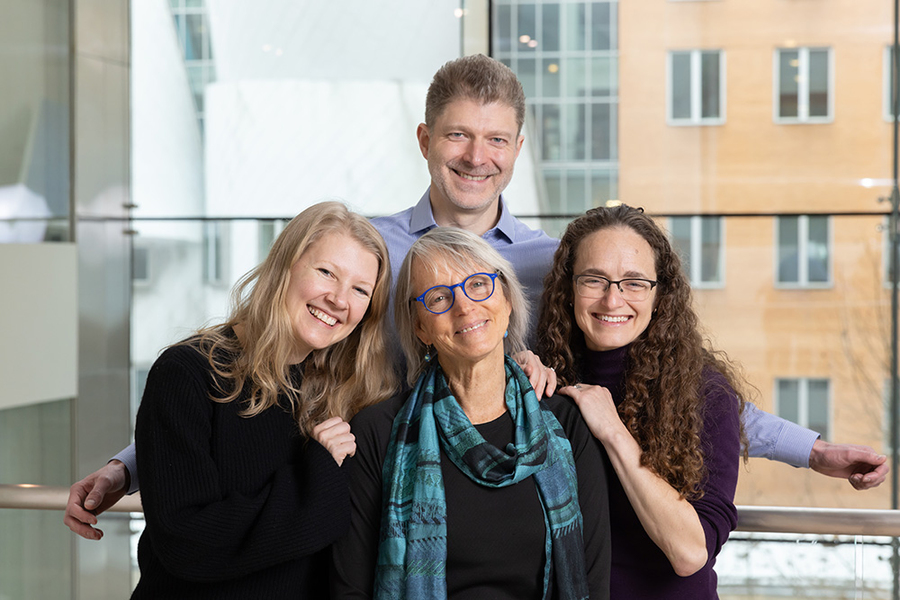[ad_1]
In 2000, Patrick J. McGovern ’59 and Lore Harp McGovern made a unprecedented present to ascertain the McGovern Institute for Mind Analysis at MIT, pushed by their deep curiosity in regards to the human thoughts and their perception within the energy of science to alter lives. Their $350 million pledge started with a easy but audacious imaginative and prescient: to know the human mind in all its complexity, and to leverage that understanding for the betterment of humanity. Twenty-five years later, the McGovern Institute stands as a testomony to the facility of interdisciplinary collaboration, persevering with to form our understanding of the mind and enhance the standard of life for folks worldwide.
McGovern at 25
Video: The McGovern Institute
To start with
“That is, by any measure, a really historic second for MIT,” mentioned MIT’s fifteenth president, Charles M. Vest, throughout his opening remarks at an occasion in 2000 to have a good time the McGovern present settlement. “The creation of the McGovern Institute will launch probably the most profound and vital scientific ventures of this century in what certainly can be a cornerstone of MIT scientific contributions from the many years forward.” Vest tapped Phillip A. Sharp, MIT Institute professor emeritus of biology and Nobel laureate, to steer the institute, and appointed six MIT professors — Emilio Bizzi, Martha Constantine-Paton, Ann Graybiel PhD ’71, H. Robert Horvitz ’68, Nancy Kanwisher ’80, PhD ’86, and Tomaso Poggio — to signify its founding college. Development started in 2003 on Constructing 46, a 376,000 sq. foot analysis complicated on the northeastern fringe of campus. MIT’s new “gateway from the north” would finally home the McGovern Institute, the Picower Institute for Studying and Reminiscence, and MIT’s Division of Mind and Cognitive Sciences.

Patrick J. McGovern ’59 (fifth from proper) and Lore Harp McGovern (on Patrick’s proper) collect with founding college members and MIT administration on the groundbreaking of Constructing 46 in 2003.
Photograph: Donna Coveney
Robert Desimone, the Doris and Don Berkey Professor of Neuroscience at MIT, succeeded Sharp as director of the McGovern Institute in 2005, and assembled a distinguished roster of twenty-two college members, together with a Nobel laureate, a Breakthrough Prize winner, two Nationwide Medal of Science/Expertise awardees, and 15 members of the American Academy of Arts and Sciences. 1 / 4 century of innovation
On April 11, 2025, the McGovern Institute celebrated its twenty fifth anniversary with a half-day symposium that includes shows by MIT Institute Professor Robert Langer, alumni audio system from varied McGovern labs, and Desimone, who’s in his twentieth yr as director of the institute.
Desimone highlighted the institute’s latest discoveries, together with the event of the CRISPR genome-editing system, which has culminated on this planet’s first CRISPR gene remedy accepted for people — a exceptional achievement that’s ushering in a brand new period of transformative medication. In different milestones, McGovern researchers developed the primary prosthetic limb absolutely managed by the physique’s nervous system; a versatile probe that faucets into gut-brain communication; an growth microscopy method that paves the way in which for biology labs all over the world to carry out nanoscale imaging; and superior computational fashions that display how we see, hear, use language, and even take into consideration what others are considering. Equally transformative has been the McGovern Institute’s work in neuroimaging, uncovering the structure of human thought and establishing markers that sign the early emergence of psychological sickness, earlier than signs even seem.

The McGovern neighborhood gathers within the form of the quantity 25 to have a good time the twenty fifth anniversary of the McGovern Institute.
Photograph: Steph Stevens
Synergy and open science “I’m typically requested what makes us totally different from different neuroscience institutes and applications all over the world,” says Desimone. “My reply is easy. On the McGovern Institute, the entire is larger than the sum of its elements.” Many discoveries on the McGovern Institute have trusted collaborations throughout a number of labs, starting from organic engineering to human mind imaging and synthetic intelligence. In trendy mind analysis, important advances typically require the joint experience of individuals working in neurophysiology, habits, computational evaluation, neuroanatomy, and molecular biology. Greater than a dozen totally different MIT departments are represented by McGovern college and graduate college students, and this synergy has led to insights and improvements which are far better than what any single self-discipline might obtain alone. Additionally baked into the McGovern ethos is a spirit of open science, the place newly developed applied sciences are shared with colleagues all over the world. By means of hospital partnerships for instance, McGovern researchers are testing their instruments and therapeutic interventions in scientific settings, accelerating their discoveries into real-world options.

Professor Nancy Kanwisher (heart) with three of her scientific “kids”: (left to proper) MIT professors Evelina Fedorenko, Josh McDermott, and Rebecca Saxe.
Photograph: Steph Stevens
The McGovern legacy
A whole lot of scientific papers have emerged from McGovern labs over the previous 25 years, however most school would argue that it’s the folks — the younger researchers — that actually outline the McGovern Institute. Award-winning college typically entice the brightest younger minds, however many McGovern college additionally function mentors, creating a various and vibrant scientific neighborhood that’s setting the worldwide commonplace for mind analysis and its purposes. Kanwisher, for instance, has guided greater than 70 doctoral college students and postdocs who’ve gone on to turn out to be main scientists all over the world. Three of her former college students, Evelina Fedorenko PhD ’07, Josh McDermott PhD ’06, and Rebecca Saxe PhD ’03, the John W. Jarve (1978) Professor of Mind and Cognitive Sciences, are actually her colleagues on the McGovern Institute. Different McGovern alumni shared tales of mentorship, science, and real-world impression on the twenty fifth anniversary symposium.
Trying to the longer term, the McGovern neighborhood is extra dedicated than ever to unraveling the mysteries of the mind and making a significant distinction in lives of people at a worldwide scale. “By selling group science, open communication, and cross-discipline partnerships,” says institute co-founder Lore Harp McGovern, “our tradition demonstrates how particular person experience will be amplified by collective effort. I’m honored to be the co-founder of this unimaginable establishment — onward to the subsequent 25 years!”
[ad_2]
Source link



